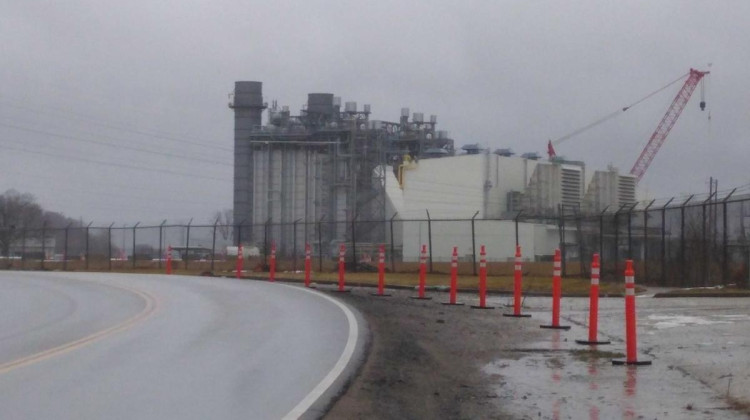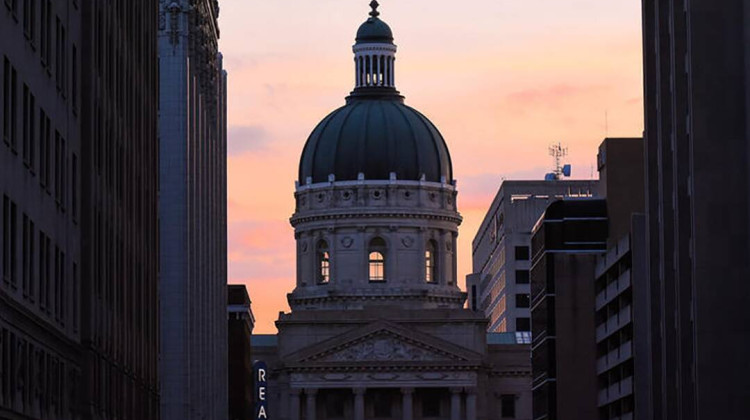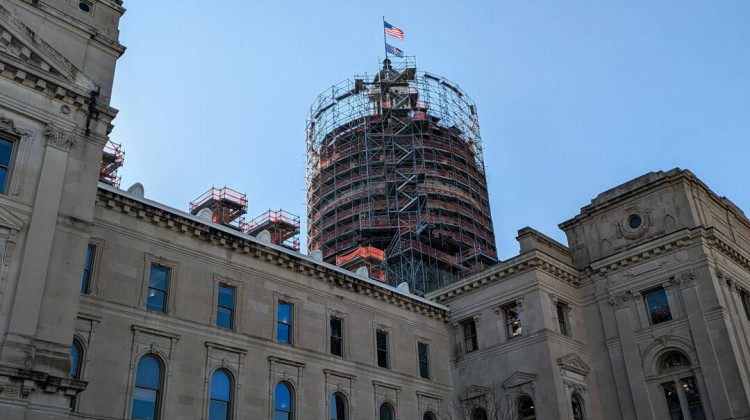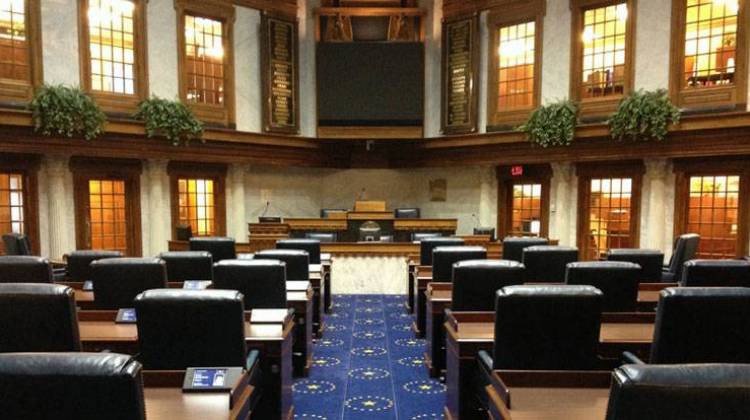
The natural gas itself — the fuel that plants like AES Indiana's Eagle Valley converts into energy — tends to be more expensive and economically volatile.
Rebecca Thiele / IPB NewsHow does the cost of natural gas for electricity — and pollution it creates — compare to coal and renewables? A member of our audience wanted to know.
Let’s start with the easier question on pollution. We know natural gas plants emit fewer greenhouse gases and toxic air pollutants than coal, but more than zero-emitting sources like solar and wind. Of course, that doesn’t factor in methane leaks — which can happen along the natural gas supply chain.
The question about cost is much, much harder to answer. That’s because a lot of things go into the cost of electricity — and some of them can change from month to month or even day to day.
U.S. Energy Information Administration electricity expert Glenn McGrath breaks down what factors determine the cost of electricity.
Installation
McGrath thinks of cost in terms of cost per kilowatt. He said that makes natural gas generally cheaper to build than wind and solar because gas plants can produce more energy more often. Of course, while they may cost more up front, renewables save a lot of money in the cost of fuel.
READ MORE: Does Indiana need natural gas 'peaker' plants?
It’s not clear how building a natural gas plant would compare to building a new coal plant because McGrath said, at this point, no new coal plants are being built. In comparing different types of natural gas plants, it costs less to build a smaller, simple cycle gas plant — sometimes known as a “peaker” — than a full-size natural gas plant.
Fuel
Solar and wind energy don’t require fuel, so those would be the cheapest in that respect.
McGrath said natural gas plants can convert fuel to energy more efficiently than coal plants, so it has often been cheaper than coal in recent years.
But the natural gas itself — the fuel — tends to be more expensive and very volatile. McGrath said gas prices also tend to be highest in the summer and winter, when the demand for energy peaks. He said, coal prices, on the other hand, don’t vary as much because coal plants can stockpile coal.
“So that has an effect of stabilizing the coal price. And coal if you look at coal price it really is very steady over time,” McGrath said.
He said since March, the price of fuel for natural gas and coal have been about even.
READ MORE: What is the progress of nuclear power in Indiana?
Join the conversation and sign up for the Indiana Two-Way. Text "Indiana" to 765-275-1120. Your comments and questions in response to our weekly text help us find the answers you need on climate solutions and climate change at ipbs.org/climatequestions.
Weather and dispatchability
You may not realize it, but every day several people come together to decide what sources of energy are going to be used to turn your lights on.
Most of Indiana is part of a large, interconnected grid that spans from the Canadian province of Manitoba all the way down to Louisiana. Regional grid operators at the Midcontinent Independent System Operator (MISO) decide what energy becomes available on the wholesale market — mostly based on availability, supply and the cost to run that energy source. Utilities can then decide how much power to purchase from that market and how much power they’ll get from their own energy sources.
McGrath said wind and solar — which have low fuel costs and don’t always run — tend to get dispatched first. Natural gas would likely be selected next. McGrath said that’s because they can start up and shut off more quickly than coal — which better complements renewables.
“[Coal plants] were designed to be steady-state. And if you’re constantly turning off these things, it really creates a lot of stresses on that plant,” he said.
McGrath said, for this reason, sometimes coal plants will bid a bit more in the market than what’s profitable in order to keep running.
Federal incentives and regulations
Things like federal tax credits can also have an effect on the cost of a particular source of electricity. The Biden administration’s Inflation Reduction Act gives billions to utilities to encourage cleaner sources of energy. Natural gas and coal have also received government subsidies for decades.
Environmental regulations can have an impact too — though perhaps less than you might expect, said McGrath. The Mercury and Air Toxics Standard did significantly curb how much air pollution coal plants could emit, making them less profitable.
McGrath said many environmental regulations get proposed, but later get blocked by the courts. So while these rules may threaten to make power plants that pollute more uneconomical, they may not actually close in the end.
“There really isn't a rule right now that companies are saying, ‘I can't comply with that rule, so I'm going to fold.’ What they're doing is … they're worried about the regulations. We don't know what the regulations are going to be, but they're going to be some of them and do we want to get out now or do we want to run this a little bit longer?” McGrath said.
McGrath said, right now, more closures are related to pressure from industries with climate goals than from federal regulations.
Rebecca is our energy and environment reporter. Contact her at rthiele@iu.edu or follow her on Twitter at @beckythiele.
 DONATE
DONATE






 Support WFYI. We can't do it without you.
Support WFYI. We can't do it without you.